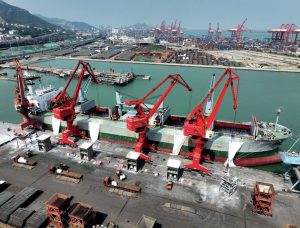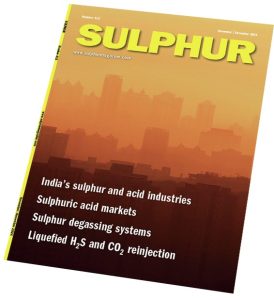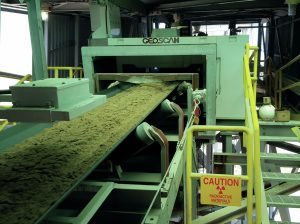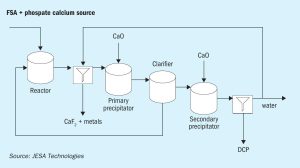
Phosphates project listing 2025
Fertilizer International presents a global round-up of phosphate rock, phosphoric acid and finished phosphates projects.

Fertilizer International presents a global round-up of phosphate rock, phosphoric acid and finished phosphates projects.

Although China remains the world’s largest phosphate producer, it has been overtaken as the largest exporter by Morocco in recent years as domestic producers face continuing restrictions on exports.

Brazil’s state-controlled oil company Petrobras plans to resume construction of its UFN-III nitrogen fertilizer unit in Tres Lagoas, Mato Grosso do Sul state.

Market snapshot, 2nd January 2025

12 Dec 2024 On 8 December, Syrian rebel forces led by Islamist group Hayat Tahrir al-Sham (HTS) ousted the government of Bashar al-Assad. The now thirteen-year long civil war in the Middle Eastern nation has proven hugely disruptive to its phosphate rock production. During the 2020s exports recovered strongly amid Russian intervention and a lull […]

OCP’s recent award of a contract to Worley Chemetics for three new greenfield sulphuric acid plants has confirmed the phosphate giant’s plans for its new Mzinda Phosphate Hub in Morocco, one of the largest investments in new phosphate capacity anywhere in the world over the next few years. It is part of a number of new investments under way in Morocco as OCP continues to expand its already considerable phosphate facilities. Three new fertilizer lines came onstream at Jorf Lasfar in 2023 and 2024, each with a capacity of 1 million t/a of diammonium phosphate (DAP). The Mzinda mega-project will add another 4 million t/a of triple superphosphate (TSP) capacity by around 2028-29, and will relieve some of the issues that OCP has in importing ammonia for DAP production, as TSP only requires phosphate rock and phosphoric acid. There is also an additional 1 million t/a of TSP capacity under construction at Jorf Lasfar, which is expected to be completed next year, and OCP also announced last year that it would build an integrated purified phosphoric acid (PPA) plant at Jorf Lasfar. The first phase of the project consists of 200,000 t/a of P2 O5 pretreated phosphoric acid capacity, 100,000 t/a (P2 O5 ) of PPA capacity, and 100,000 t/a of technical MAP (tMAP) capacity. The site will also be home to downstream production of phosphate salts and lithium iron phosphate (LFP) capacities. The initial plants will be delivered starting in mid-2026, carrying through into 2029, constructed in conjunction with JESA, a joint venture between OCP and Worley.
Join us at the CRU Sulphur + Sulphuric Acid 2024 Conference and Exhibition in Barcelona, 4-6 November, for a global gathering of the sulphur and sulphuric acid community. Meet leading market and technology experts and producers, network, share knowledge, and learn about market trends and the latest developments in operations, process technology and equipment.

Sophisticated control of phosphates production is now possible thanks to the availability of real-time process analysers. The emergence of laboratory robots is also improving process efficiency and delivering cost savings.

We profile leading suppliers of tailor-made pumps to the phosphate, potash and sulphur industries.

The newly-patented SWIFT process is designed to sequester fluorine at phosphoric acid plants in an environmentally responsible way. It can also offset the costs of fluorine management by generating a saleable dicalcium phosphate (DCP) end-product as an additional revenue stream. A number of capex and opex advantages provide the SWIFT process with highly favourable economics, as James Byrd of JESA Technologies explains.